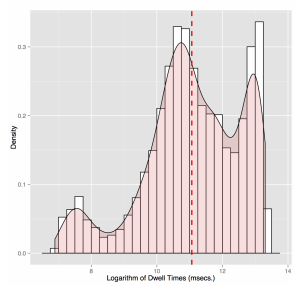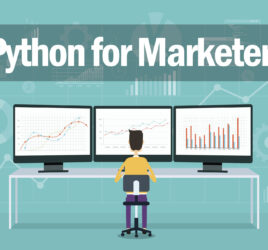
Identifying accidental clicks on digital ads
We’ve all done it at one time or another.
You’re trying to scroll on your smart phone and you click on a digital ad by accident. And advertisers can be pretty sure that others are accidentally clicking on their ads.
“Fat fingers” can be fairly common problem, but exactly how often this happens is a point of debate. One study estimated that about 10 percent of ad clicks were accidental, while others have put the figure as high as 60 percent.
For marketers, this can be a huge problem because it skews your data by including an unknown number of users who did not intend to click on your ad. Or even worse, if the ads are on a cost-per-click basis, you’re wasting cash on clicks and devaluing your campaign.
Advertising networks have taken steps to reduce accidental clicks. Google has implemented a number of protections, and likewise Facebook has instituted a number of changes on its ad network, including a new standard that users who spend less than 2 seconds on a page will not count as a click.
Improved algorithms
Partly because of the potential impact on ad networks and their relationship with advertisers, this issue has also caught the attention of some researchers.
Research published recently in the International Journal of Data Science and Analytics proposes a new algorithm for identifying accidental clicks based on “dwell time” of the landing page.
According to researchers, traditional methods of detecting accidental clicks relied on a fixed, arbitrary threshold for dwell time. For example, users who spent less than 5 seconds on a landing page would be considered “accidental clicks”
Their research used a machine learning algorithm including data based on three types of clicks – “accidental,” “short,” or “long.”

Researches classified clicks as either accidental, short or long.
Based on their algorithm, researchers proposed a strategy for discounting ads for accidental clicks that have a “marginal” revenue impact on ad networks. They also found that their model trained on non-accidental clicks resulted in an higher click through rate and revenue when compared to a model trained on all clicks.
Web analytics
As an advertiser, there’s not much you can do to prevent accidental clicks aside from the selection of ad network and their safeguards. And while you may never know with 100% certainty whether the ad click was accidental, this needs to be taken into consideration as part of your analytics and campaign evaluation.
When looking at accidental clicks, “dwell time,” or time on page, is they key metric to consider.
One challenge with measuring time on page is Google Analytics by default does not track time on page where the user bounces – which is particularly relevant in this situation because if it was an accidental click, the user is almost certainly going to bounce.
This is because Google Analytics measures time on page by the time between page clicks. If you bounce off the site and do not click on another page, the time on page will be recorded as 0 (this blog post explains this more in depth).
There are some workarounds, however. Using Google Tag Manager, you can track scroll depth and time on page. There are many other tutorials out there that describe a “modified bounce rate” or “active time on page.”
These methods not only help answer some of the questions surrounding accidental clicks but also provide insight into overall site engagement that are beneficial to have anyway. If you see that scroll depth is particularly low on certain pages, you should evaluate the copy and navigation on the page to see if there are places where you’re losing traffic.




One comment